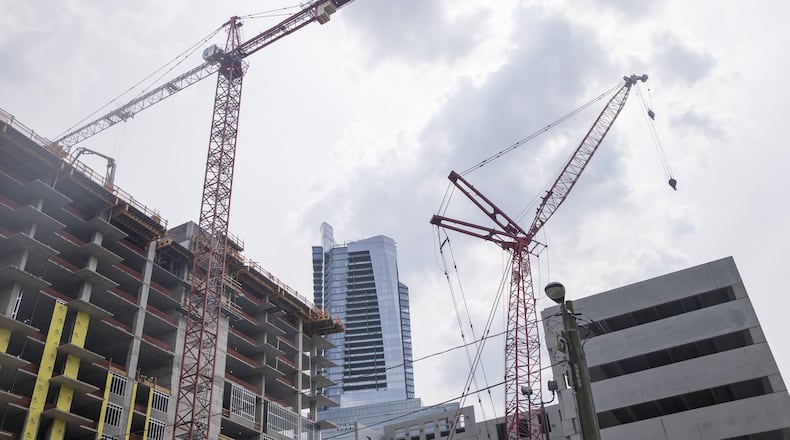Tower cranes, the tall behemoths used to lift tons of construction materials hundreds of feet into the air, are subject to several routine inspections by federal regulators.
The Occupational Safety and Health Administration, known as OSHA, lists multiple checkpoints and documented inspection steps that construction crews are expected to follow. Otherwise, they risk violations and monetary fines.
A crane is assembled atop a concrete foundation and consists of multiple metal sections forming the tower and arm. A counterweight is installed to prevent the entire structure from toppling over. Cranes must pass specific load and weight-bearing tests when they are initially assembled.
Every month, structural bolts and floor wedges — which connect cranes to nearby buildings — are supposed to be inspected in case anything becomes loose or dislodged. Any components flagged as potential safety hazards during the tower crane’s assembly must also be checked monthly.
OSHA was called to investigate Monday’s partial crane collapse. A spokesperson for Balfour Beatty, the general contractor at the site of the accident, said the cause of the crane failure remains undetermined, but Atlanta fire officials said a counterweight on the crane became dislodged and one of the four structures attaching it to the building fell away.
The maximum penalty OSHA can levy for a single incident is $15,625, unless the incident is repeated or found to be done willfully.
OSHA has opened more than 20 investigations into Balfour Beatty over the past decade in Georgia, but only two resulted in violations. In 2013, the company was fined nearly $5,000 for a stairway violation, while the company was ordered to pay a $4,125 penalty the following year for lacking proper fall protection systems.
About the Author
Keep Reading
The Latest
Featured



